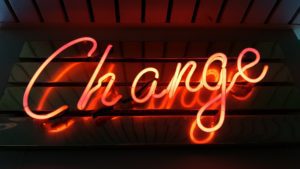Today, the United States Supreme Court issued its decision in Bostock v. Clayton County, Georgia (“Bostock“). This landmark decision holds that Title VII of the Civil Rights Act of 1964, which bans sexual discrimination, includes sexual orientation and gender identity as part of sex discrimination. So in every state in the United States, harassment and discrimination based on sexual orientation and gender identity are now illegal, if they weren’t already before. Here is a map of state laws on sexual orientation and gender identity.) Bostock will affect many – though not all – employers in terms of gender identity and sexual orientation harassment training and policies.

Photo by Ross Findon on Unsplash
What Bostock means for companies and organizations depends on which category they fall into below. The key question is whether they’ve previously included sexual orientation and gender identity as protected categories in their policies and in their anti-harassment training.
1. Companies governed by state laws that already include these as protected categories. These organizations should see little change in their policies if they have been following state law. They should already have sexual orientation and gender identity/expression protected categories in their EEO, anti-harassment, and anti-discrimination policies.
As for training, if they have been providing gender identity and sexual orientation harassment training as part of their sexual harassment training, they’re in good shape. For instance, as of 2018, California’s SB 1343 has required that sexual harassment training include gender identity/expression and sexual orientation. (In my opinion, a skilled harassment prevention trainer should have been including them, as well as other protected categories, before that.) If organizations haven’t been including these areas in their anti-harassment training, they may want to consider doing so soon, either as part of a sexual harassment training or as a stand-alone training.
2. Companies that have included these as protected categories as a best practice, even though their state laws did not require it. Similarly, these companies should be in relatively good shape. They will want to double-check their policies, as well as their most recent training to see if it effectively addressed discrimination and harassment based on gender identity and sexual orientation.
3. Companies that didn’t include these categories as protected categories. Again, Bostock means that sexual orientation and gender identity are protected categories, even in states where state laws previously permitted such discrimination. For these companies, this will be be a big change, and they will want to act immediately.
These employers will want to make changing their EEO, anti-harassment, and anti-discrimination policies a top priority. Moreover, they will want to strongly consider anti-harassment training that includes gender identity and sexual orientation harassment training. While neither SCOTUS nor Title VII require sexual or other harassment training for most employers, the benefits for proactively preventing sexual orientation and gender identity harassment by effective training are self-evident. (Also, anti-harassment training may constitute part of an affirmative defense under federal law.) The need for effective training will be particularly strong for companies whose employees have never received anti-harassment training on these categories.)
If we can be of assistance in providing training in preventing sexual orientation and gender identity harassment, please contact us. We provide virtual anti-harassment training webinars and in-person training throughout the United States.

Recent Comments